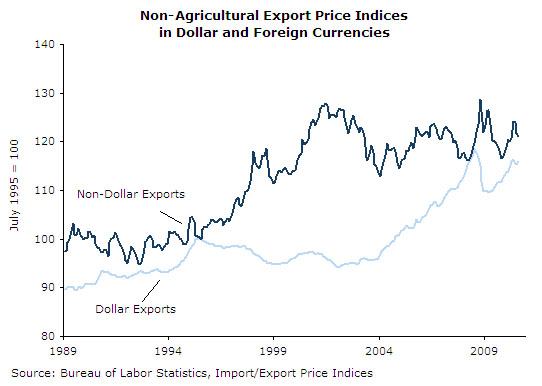September 17, 2010
September 17, 2010
From 1995-2002, the dollar rose 34 percent relative to other world currencies. This made U.S. imports of foreign goods very inexpensive and exports of goods to other countries relatively costly. Although the export price index fell 5.7 percent over this time, that index is measured in dollars. Rapid appreciation of the dollar meant that consumers in foreign countries paid 27 percent more (in their own currencies) for the goods in early 2002 than they did in mid-1995.
Since early 2002, the trend has reversed. The (dollar) price index for U.S. exports has risen 23 percent, but the real dollar has fallen 22 percent—resulting in a small decline in the price of these exports as seen by our trading partners.

Read the entire Prices Byte.






